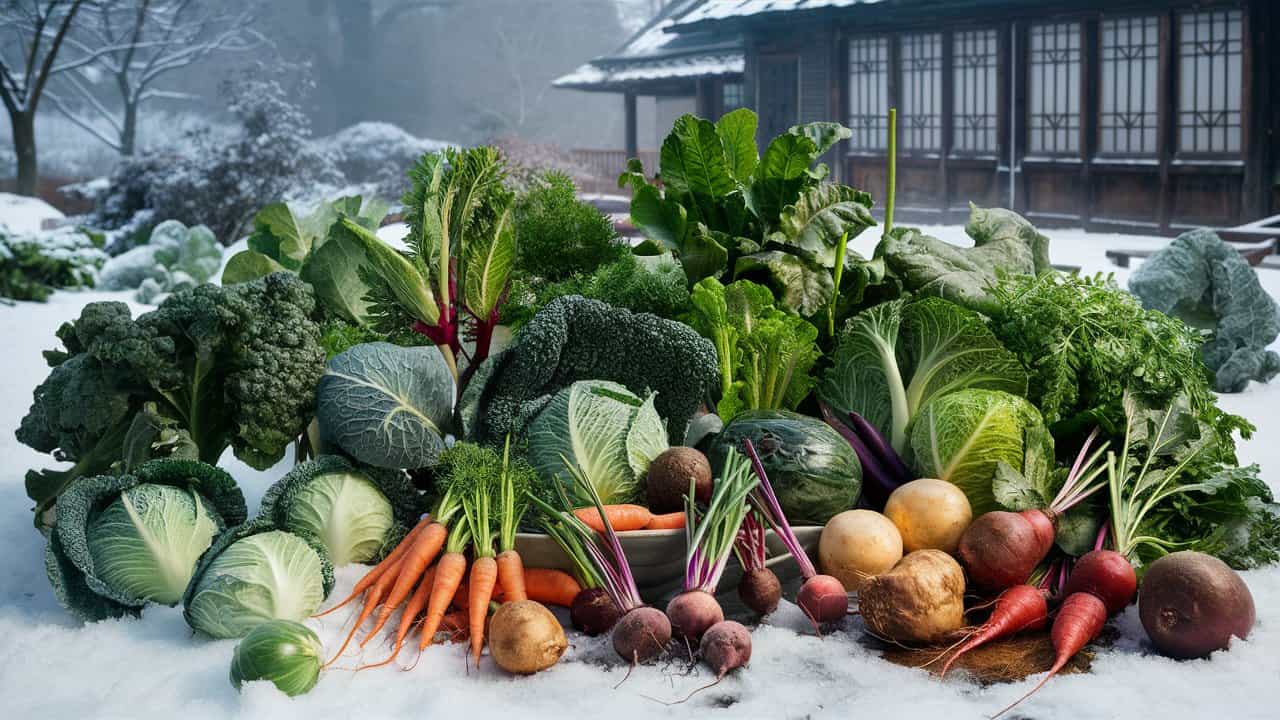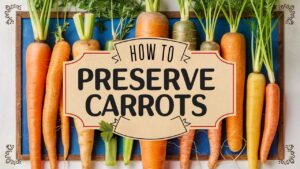Don’t let the chill of winter stop you from enjoying a bountiful harvest of fresh, nutrient-dense vegetables. In this guide, we’ll explore a diverse array of cold-hardy crops that thrive in the cooler months, offering unique growing tips, nutritional benefits, and mouthwatering recipe ideas to transform your kitchen into a year-round oasis of homegrown goodness.
Kale
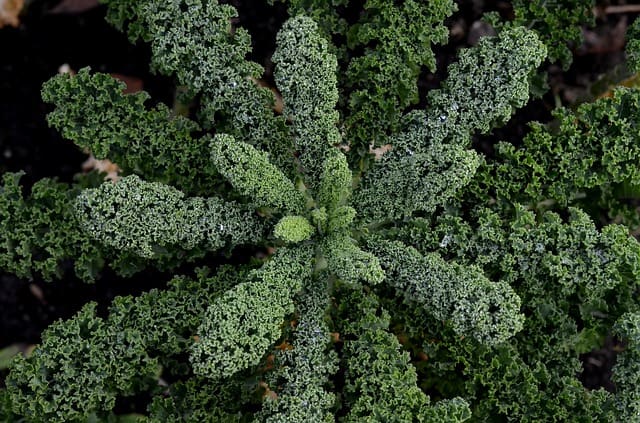
Kale is a hardy, nutrient-dense green that thrives in cool weather, making it an excellent choice for the winter garden. This leafy vegetable is packed with vitamins A, C, and K, as well as minerals like calcium and iron. Kale’s robust texture and earthy flavor make it a versatile ingredient, perfect for soups, stir-fries, and even raw salads. When growing kale in the winter garden, choose cold-hardy varieties like ‘Siberian’ or ‘Red Russian’ that can withstand frosty temperatures. Protect your kale plants with row covers or cold frames to extend the harvest season and enjoy this superfood well into the colder months.
Mache (Corn Salad)
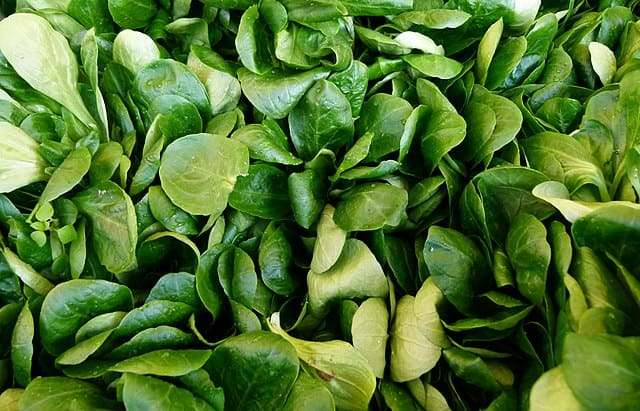
Also known as lamb’s lettuce or field salad, mache is a delicate, delicious green that flourishes in cool weather. This small, rosette-forming plant has a sweet, nutty flavor and tender, delicate leaves that are perfect for fresh salads. Mache is an excellent source of vitamins A, C, and E, as well as folate and minerals like iron and calcium. To grow mache in your winter garden, sow the seeds directly in the ground in late summer or early fall. Protect the plants with row covers or cold frames to ensure a bountiful harvest throughout the cooler months.
Spinach
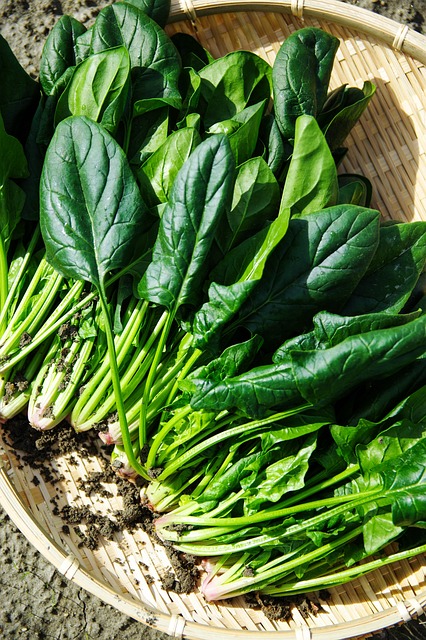
Spinach is a true winter champion, thriving in the cooler temperatures and shorter days of the colder season. This nutrient-packed green is rich in vitamins A, C, and K, as well as minerals like iron and magnesium. Spinach leaves can be harvested continuously throughout the winter, providing a steady supply of fresh, flavorful greens for salads, sautés, and more. When growing spinach in the winter garden, choose cold-hardy varieties like ‘Bloomsdale’ or ‘Tyee’ and consider using row covers or cold frames to extend the harvest season. With proper care and protection, your spinach plants will provide a bountiful and delicious winter harvest.
Radicchio

Radicchio, with its striking red and white leaves, is a winter garden showstopper. This bold, bitter green thrives in cool weather and adds a unique, peppery flavor to salads, roasted dishes, and more. Radicchio is a member of the chicory family and is packed with vitamins A, C, and K, as well as antioxidants that can support overall health. When growing radicchio in the winter garden, choose varieties like ‘Rossa di Treviso’ or ‘Chioggia’ that are particularly cold-hardy. Protect your radicchio plants with row covers or cold frames to ensure a bountiful harvest throughout the colder months.
Collard Greens
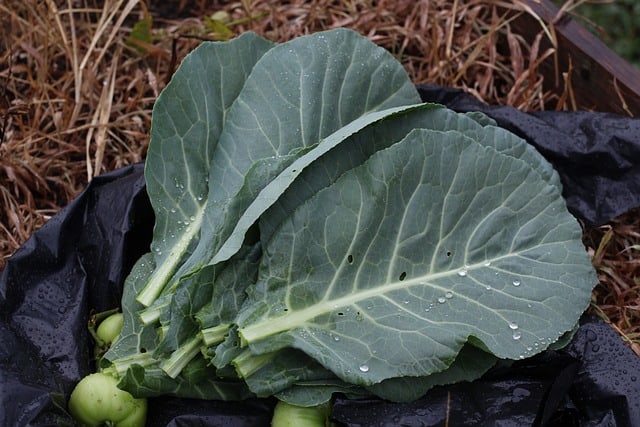
Collard greens are a hardy, nutritious green that thrives in cool weather, making them an excellent choice for the winter garden. These large, leafy greens are a staple in Southern cuisine and are packed with vitamins A, C, and K, as well as fiber and minerals like calcium and iron. Collard greens have a slightly bitter, earthy flavor that mellows when cooked. To grow collard greens in your winter garden, select cold-tolerant varieties like ‘Georgia’ or ‘Champion’ and consider using low tunnels or cold frames to extend the harvest season. With their robust texture and impressive nutritional profile, collard greens are a must-have for any winter vegetable garden.
Mustard Greens

Mustard greens are a peppery, nutrient-dense addition to the winter garden. These bold, flavorful greens are rich in vitamins A, C, and K, as well as minerals like calcium and iron. Mustard greens have a distinct, spicy flavor that adds a delightful kick to salads, stir-fries, and sautés. When growing mustard greens in the cooler months, choose fast-maturing varieties like ‘Southern Giant Curled’ or ‘Osaka Purple’ that can withstand frost and cold temperatures. Protect your mustard greens with row covers or cold frames to extend the harvest season and enjoy their vibrant, zesty flavor throughout the winter.
Arugula
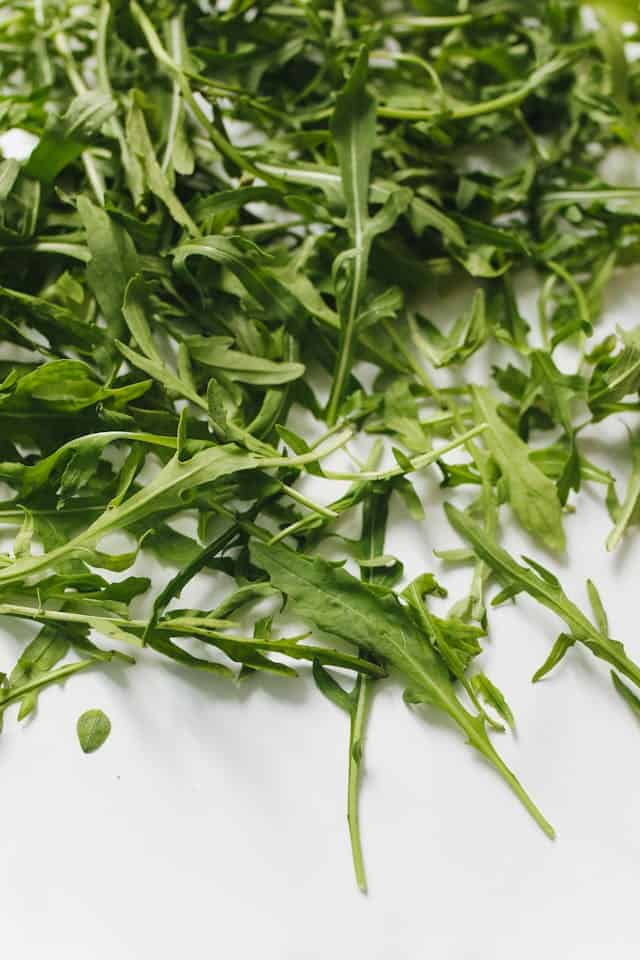
Arugula, also known as rocket, is a peppery, flavorful green that thrives in cool weather, making it a perfect addition to the winter garden. This fast-growing leafy vegetable is packed with vitamins A, C, and K, as well as beneficial antioxidants. Arugula’s distinctive, slightly nutty taste adds a delightful zing to salads, sandwiches, and even pasta dishes. When growing arugula in the winter garden, choose bolt-resistant varieties like ‘Astro’ or ‘Sylvetta’ that can withstand the colder temperatures. Protect your arugula plants with row covers or cold frames to extend the harvest season and enjoy this versatile green well into the winter months.
Winter Cress

Winter cress, or upland cress, is a hardy, nutritious green that flourishes in the cooler months of the year. This leafy vegetable has a slightly peppery, watercress-like flavor that adds a delightful zing to salads, soups, and sautés. Winter cress is an excellent source of vitamins A, C, and K, as well as minerals like calcium and iron. To grow winter cress in your winter garden, sow the seeds directly in the ground in late summer or early fall. Protect the plants with row covers or cold frames to ensure a bountiful harvest throughout the colder season. With its unique flavor and impressive nutritional profile, winter cress is a must-have for any winter vegetable garden.
Garlic
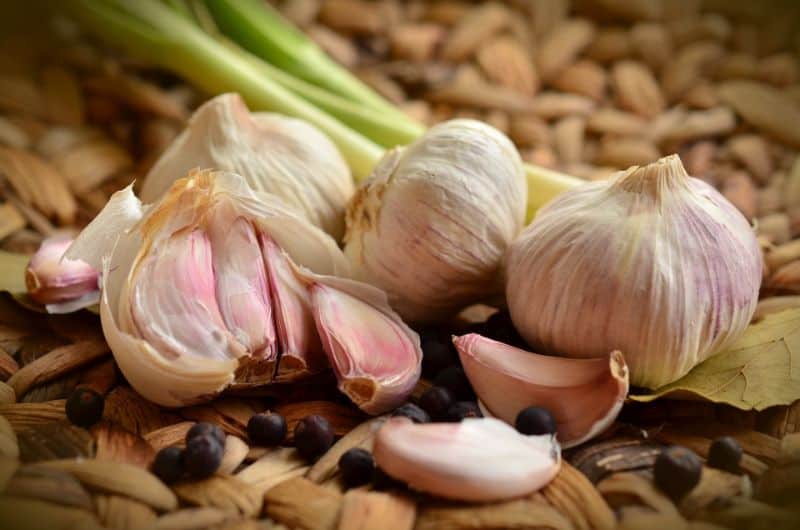
While not technically a vegetable, garlic is a versatile and essential ingredient in the winter garden. This flavorful allium thrives in cool weather and can be planted in the fall for a bountiful harvest the following summer. Garlic is packed with beneficial compounds like allicin, which can support overall health, and it adds a savory, aromatic depth to a wide range of winter dishes. When growing garlic in the winter garden, choose hardneck varieties like ‘Music’ or ‘German Red’ that are particularly cold-hardy. Mulch your garlic plants well to protect the roots from freezing temperatures, and enjoy the fresh, homegrown flavor throughout the colder months and beyond.
Lettuce
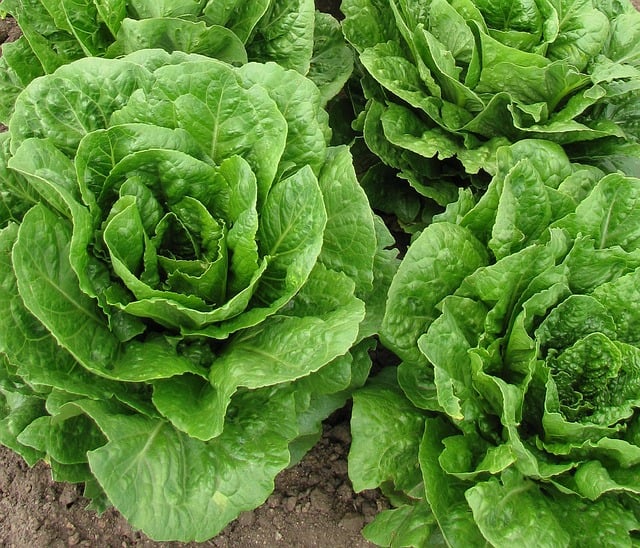
While many gardeners assume that lettuce is a warm-weather crop, there are actually several varieties that thrive in the cooler temperatures of the winter garden. Leaf lettuces like ‘Red Sails’ and ‘Oakleaf’ are particularly cold-hardy, able to withstand frost and even light freezes. These leafy greens provide a steady supply of fresh, crunchy salad ingredients throughout the winter months. To extend the harvest season, consider using cold frames or low tunnels to protect your lettuce plants from the harshest winter weather. With their vibrant colors, delicate textures, and impressive nutritional profiles, winter-hardy lettuces are a must-have for any cold-season vegetable garden.
Cabbage
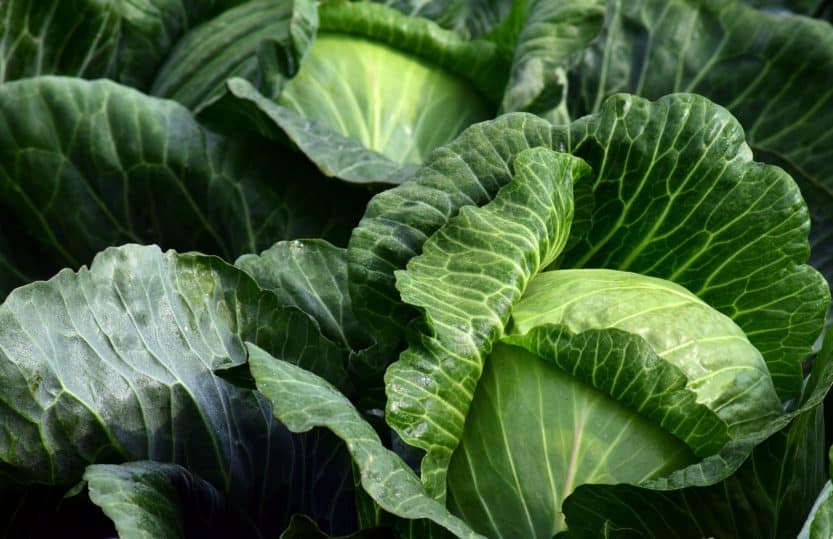
Cabbage is a true winter champion, with many varieties able to withstand freezing temperatures and even light snow. This hardy, nutrient-dense vegetable is packed with vitamins C and K, as well as fiber and antioxidants. Cabbage’s sturdy texture and mild, slightly sweet flavor make it a versatile ingredient in soups, slaws, and roasted dishes. When growing cabbage in the winter garden, choose compact, cold-tolerant varieties like ‘Deadon’ or ‘January King’ that can thrive in the cooler months. Protect your cabbage plants with row covers or cold frames to extend the harvest season and enjoy this versatile vegetable well into the winter.
Swiss Chard
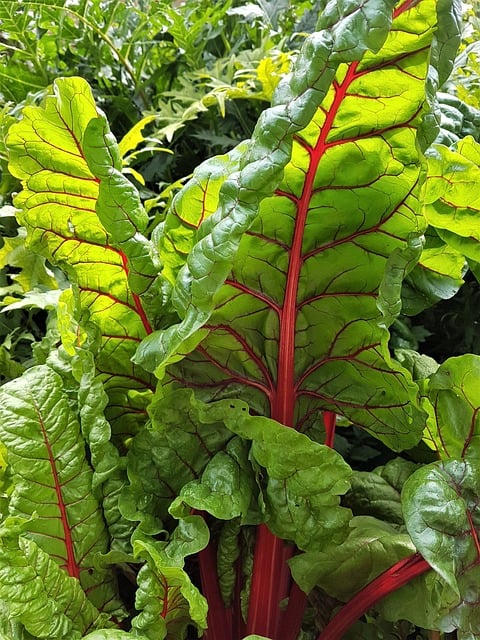
Swiss chard is a resilient, nutritious green that flourishes in cool weather, making it an excellent choice for the winter garden. This leafy vegetable boasts vibrant, rainbow-colored stems and large, tender leaves that are packed with vitamins A, C, and K, as well as minerals like magnesium and potassium. Swiss chard has a slightly sweet, earthy flavor that complements a wide range of winter dishes, from soups and stews to sautés and gratins. To grow Swiss chard in your cold-season garden, select cold-hardy varieties like ‘Bright Lights’ or ‘Fordhook Giant’ and consider using row covers or cold frames to protect the plants from frost and freezing temperatures. With its impressive nutritional profile and versatile culinary uses, Swiss chard is a must-have for any winter vegetable garden.
Scallions
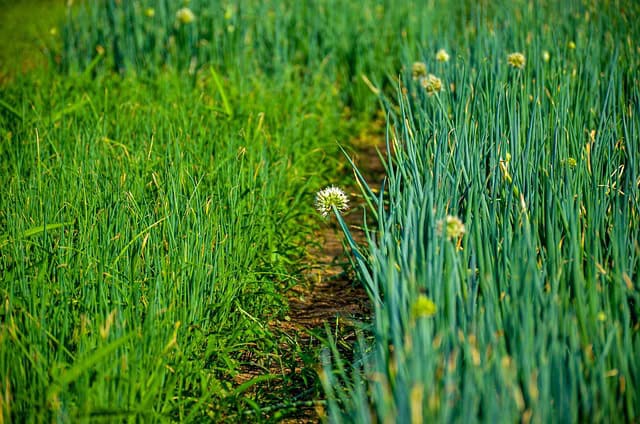
Scallions, also known as green onions, are a versatile and hardy addition to the winter garden. These flavorful alliums can withstand cool temperatures and even light frost, providing a steady supply of fresh, aromatic greens throughout the colder months. Scallions are packed with vitamins A and C, as well as beneficial sulfur compounds that may support overall health. To grow scallions in your winter garden, simply sow the seeds or transplant seedlings in the fall, and protect the plants with row covers or cold frames as needed. The tender, mild-flavored greens can be harvested continuously, adding a delightful onion-y kick to soups, stir-fries, and more. With their versatility and cold-hardiness, scallions are a must-have for any winter vegetable garden.
Broccoli

Broccoli is a cool-weather champion, thriving in the shorter days and lower temperatures of the winter season. This nutrient-dense vegetable is packed with vitamins C and K, as well as fiber and antioxidants that can support overall health. Broccoli’s firm, flavorful florets and tender stalks make it a versatile ingredient in a wide range of winter dishes, from roasted vegetable medleys to hearty soups and stews. When growing broccoli in the winter garden, choose cold-hardy varieties like ‘Arcadia’ or ‘Waltham’ that can withstand frost and even light snow. Protect your broccoli plants with row covers or cold frames to extend the harvest season and enjoy this nutritious, delicious vegetable throughout the colder months.
Beets
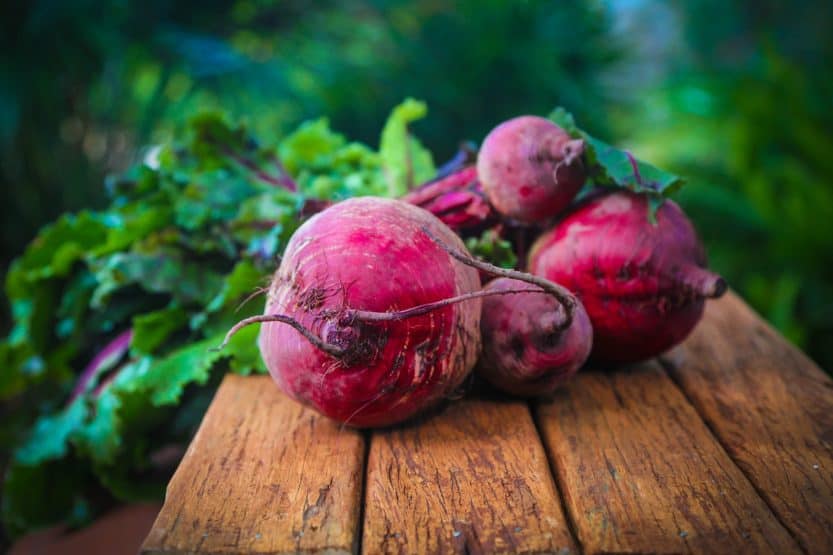
Beets are a resilient, cold-tolerant root vegetable that thrive in the winter garden. These vibrant, earthy veggies are packed with vitamins, minerals, and antioxidants that can support overall health. Beets’ sweet, slightly earthy flavor makes them a versatile ingredient in a variety of winter dishes, from roasted vegetable platters to hearty soups and stews. When growing beets in the cooler months, select cold-hardy varieties like ‘Chioggia’ or ‘Cylindra’ that can withstand frost and even light freezes. Protect your beet plants with row covers or cold frames to ensure a bountiful harvest throughout the winter season. With their impressive nutritional profile and unique, vibrant hues, beets are a must-have for any winter vegetable garden.
Endive

Endive is a cool-weather vegetable that adds a delightful bitterness and crunch to winter salads and dishes. This member of the chicory family thrives in the shorter days and lower temperatures of the colder months, producing a bounty of tightly packed, frilly leaves. Endive is packed with vitamins A, C, and K, as well as fiber and antioxidants that can support overall health. When growing endive in the winter garden, choose varieties like ‘Batavian’ or ‘Frisée’ that are particularly cold-hardy. Protect your endive plants with row covers or cold frames to extend the harvest season and enjoy the unique, slightly bitter flavor of this versatile green.
Daikon Radish

Daikon radish is a winter garden superstar, with its large, white roots and spicy, peppery greens. This Asian vegetable is packed with vitamins C and B6, as well as fiber and antioxidants. Daikon’s crunchy texture and zesty flavor make it a delightful addition to salads, slaws, and even roasted vegetable dishes. When growing daikon radish in the cooler months, choose fast-maturing varieties like ‘Minowase’ or ‘Sakurajima’ that can withstand frost and cold temperatures. Protect the plants with row covers or cold frames to ensure a bountiful harvest throughout the winter season. With its impressive nutritional profile and versatile culinary uses, daikon radish is a must-have for any winter vegetable garden.
Turnips
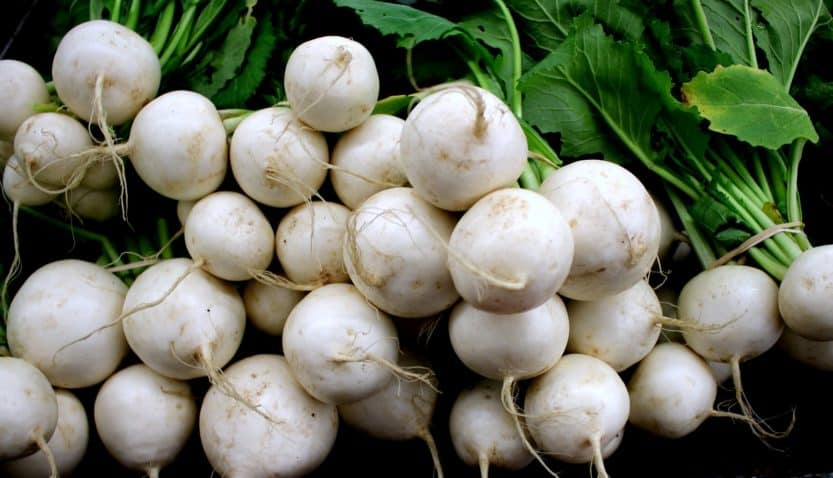
Turnips are a hardy, cold-tolerant root vegetable that thrive in the winter garden. These versatile veggies boast a crisp, slightly sweet flavor and a vibrant, purple-and-white hue that adds visual interest to winter dishes. Turnips are packed with vitamins C and K, as well as fiber and antioxidants that can support overall health. When growing turnips in the cooler months, select fast-maturing, cold-hardy varieties like ‘Purple Top’ or ‘Tokyo Cross’ that can withstand frost and even light snow. Protect your turnip plants with row covers or cold frames to extend the harvest season and enjoy the fresh, homegrown flavor of this winter garden staple.
Bok Choy
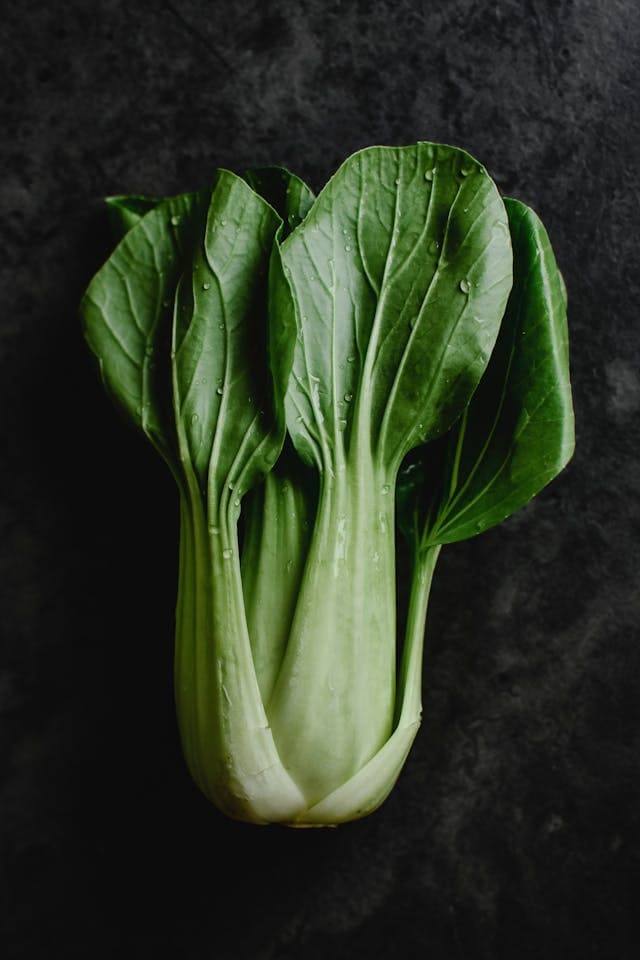
Bok choy, a member of the cabbage family, is a versatile and cold-hardy vegetable that thrives in the winter garden. This Asian green boasts tender, succulent leaves and crunchy, flavorful stems that add a delightful texture and flavor to a variety of winter dishes. Bok choy is packed with vitamins A, C, and K, as well as minerals like calcium and iron. When growing bok choy in the cooler months, choose compact, fast-maturing varieties like ‘Shanghai’ or ‘Mei Qing Choi’ that can withstand frost and even light freezes. Protect your bok choy plants with row covers or cold frames to extend the harvest season and enjoy the fresh, mild-flavored greens throughout the winter.
Leeks
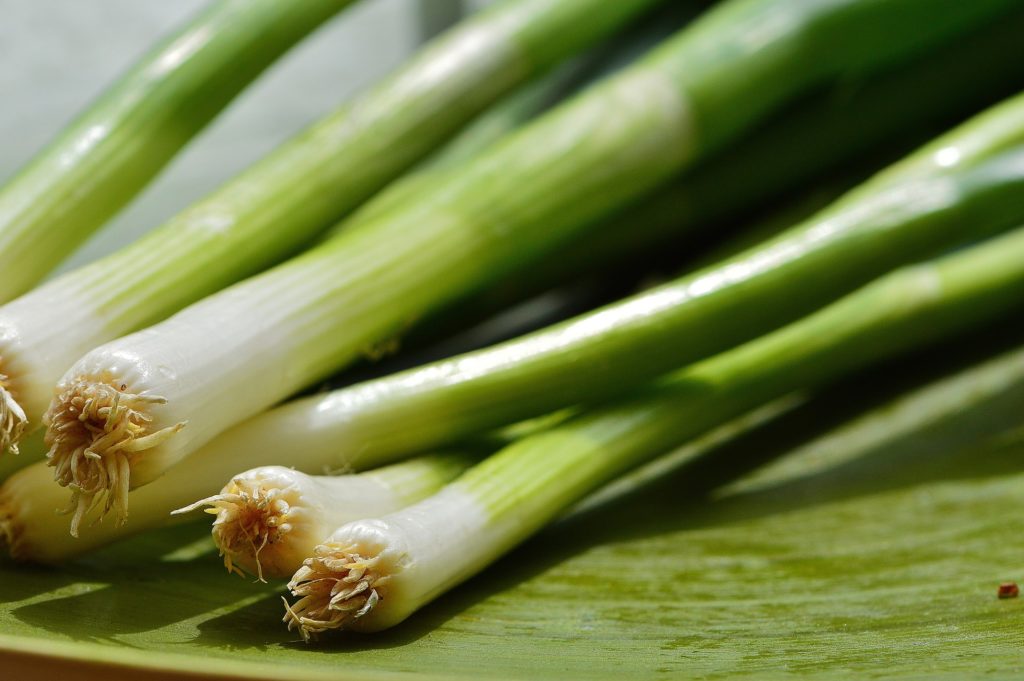
Leeks are a cold-hardy allium that add a delicate, onion-like flavor to a variety of winter dishes. These tall, cylindrical vegetables thrive in the cooler temperatures of the winter garden, producing tender, flavorful stalks that are perfect for soups, stews, and roasted vegetable medleys. Leeks are an excellent source of vitamins A, C, and K, as well as fiber and antioxidants. When growing leeks in the winter garden, select varieties like ‘King Richard’ or ‘Lancelot’ that are particularly cold-tolerant. Protect your leek plants with mulch or row covers to ensure a bountiful harvest throughout the colder months. With their versatility and impressive nutritional profile, leeks are a must-have for any winter vegetable garden.
Parsnips
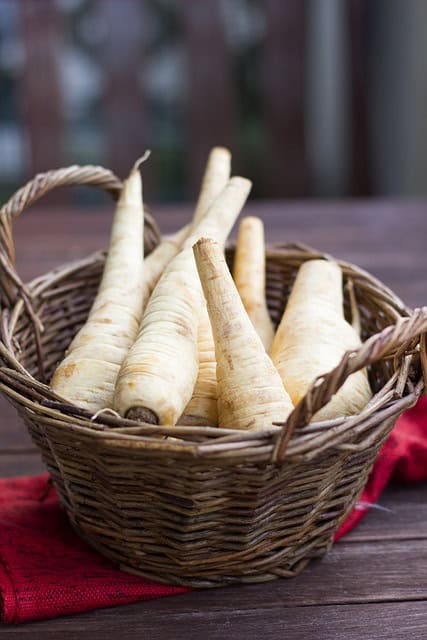
Parsnips are a cold-loving root vegetable that shine in the winter garden. These long, tapered roots have a sweet, nutty flavor that becomes even more pronounced after being exposed to frost. Parsnips are packed with vitamins C and K, as well as fiber and antioxidants that can support overall health. When growing parsnips in the cooler months, choose varieties like ‘Harris Model’ or ‘Hollow Crown’ that are particularly cold-hardy. Protect your parsnip plants with row covers or mulch to ensure a successful harvest, and enjoy the fresh, homegrown flavor of this winter garden staple in soups, roasted dishes, and more.
Winter Garden Hardiness Zone Planting Dates
When planning your winter vegetable garden, it’s important to consider your local climate and hardiness zone. Different vegetables thrive in varying temperature ranges, so it’s crucial to choose the right varieties and plan your planting schedule accordingly.
For gardeners in USDA Hardiness Zones 3-6, the optimal planting time for many winter vegetables is late summer to early fall, typically between August and October. This allows the plants to establish themselves before the first frost. Crops like kale, spinach, and carrots can often be sown directly in the ground during this period.
In Hardiness Zones 7-9, the winter growing season is generally longer, with a wider window for planting. Many cool-weather vegetables can be sown in late fall or even early winter, with the potential for harvesting well into the spring months. Leafy greens, brassicas, and root vegetables all thrive in these milder climates.
Regardless of your hardiness zone, using season-extending techniques like cold frames, row covers, and low tunnels can help push the boundaries of your winter garden and ensure a bountiful harvest throughout the colder months.
Conclusion
The winter garden is a true oasis of fresh, nutrient-dense vegetables that can provide your household with a steady supply of homegrown produce, even when the temperatures drop. By incorporating a diverse array of cold-hardy crops like arugula, broccoli, and parsnips, you can enjoy the flavors and health benefits of the season while expanding your culinary horizons. With a little planning and the right growing techniques, your winter garden can become a year-round source of nourishment and delight.


